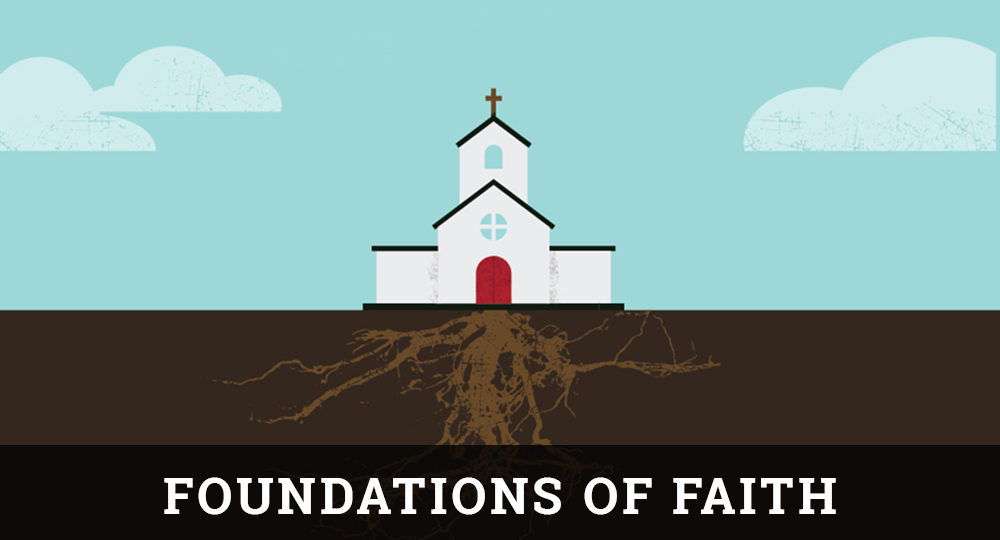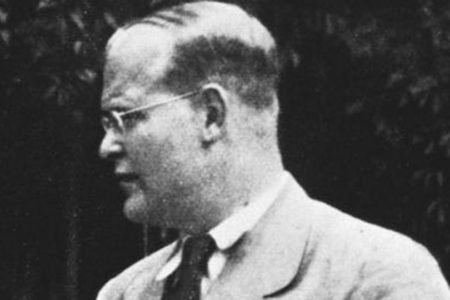The Sinlessness of Jesus Christ Part One
The Meaning of Sinlessness
To establish the meaning of sinlessness, we must first understand the concept of sin. Sin could be defined as any failure to conform perfectly to the holy character and will of God. God requires people to be holy because He is holy (Lev. 11:44; 1 Pet. 1:15–16), but people fail to fulfill that requirement (Rom. 3:23).
Human sin consists of four basic things. First is a disposition of enmity against God, often called the sin nature. The Bible teaches that sin is inscribed indelibly upon the human heart—the inner control center of human beings where all the decisions of life are made (Jer. 17:1)—and that, therefore, the human heart is “deceitful” and “wicked” (Jer. 17:9) and the source of wrong thoughts and acts (Mt. 15:19). It further declares that “the carnal mind is enmity against God” (Rom. 8:7).
Second, sin involves wrong acts. The Bible classifies such acts as murder, adultery, fornication, theft, false witness, and blasphemy as evil deeds (Mt. 15:19; Jn. 3:19).
Third, sin includes wrong thoughts, attitudes, intents, and impulses. For example, the Scriptures indicate that lusting after forbidden things and certain kinds of anger are sin (Mt. 5:21–22, 27–28).
Fourth, failure to do good deeds that should be done is sin (1 Sam. 12:23; Jas. 4:17).
On the basis of these facts concerning sin, we can conclude that a sinless person is one who never fails to be conformed perfectly to the holy character and will of God. Such a person does not possess a disposition of enmity against God (a sin nature), never commits a wrong act, never has a wrong thought, attitude, intent, or impulse, and never fails to do good deeds that should be done.
Biblical Evidences for Christ’s Sinlessness
The Bible provides several lines of evidence for the complete sinlessness of Jesus Christ. First, as a prophet, King David foretold that the Messiah would be God’s “Holy One” (Ps. 16:10). Approximately one thousand years later, the Apostles Peter and Paul indicated that, in this prophecy, David was speaking of Jesus Christ (Acts 2:25–32; 13:34–37).
The angel Gabriel declared that the child who would be born of the virgin Mary would be “holy” (Lk. 1:35).
A significant aspect of holiness is the absence of sin. Thus, David and Gabriel were foretelling the sinlessness of Christ.
Second, Jesus Christ claimed that He was sinless. To His opponents He threw the challenge, “Which of you convicteth me of sin?” (Jn. 8:46). Leon Morris stated that this challenge was “a staggering assertion of sinlessness” (The Gospel According to John in The New International Commentary on the New Testament). Merrill C. Tenney claimed that Jesus was challenging His opponents to prove Him guilty of sin and that such a challenge “would have been impossible for anyone else to utter. No human being could risk making that challenge without many flaws in his character being made known…Had Jesus not been sinless, someone in the hostile crowd would eagerly have charged him with at least one sin” (The Gospel of John in The Expositor’s Bible Commentary).
Just as “God is light, and in him is no darkness at all” (1 Jn. 1:5), so Christ asserted that He was “the light of the world” in the midst of moral and spiritual darkness (Jn. 8:12; 9:5; 12:35–36). He also signified that because He radiated the light of sinless moral perfection, He would be hated and rejected by sinful human beings (Jn. 3:19–20; 15:22–24).
Third, other people indicated that Jesus Christ was sinless. The Apostle John asserted that Jesus was “the true Light,” lighting people in the midst of moral and spiritual darkness (Jn. 1:4–5, 9).
John also wrote concerning Christ, “in him is no sin” (1 Jn. 3:5). Gustav Stahlin declared that here the word sin refers to the thing that determines “human nature in hostility to God” (“hamartia,” Theological Dictionary of the New Testament). David Smith indicated that it denotes “the sinful principle” inside of people that manifests itself outwardly “in specific acts” (The Epistles of John in The Expositor’s Greek Testament). Thus, John was saying that Jesus did not have the disposition of enmity against God (the sin nature) inside of Him.
The Apostle Peter declared that Jesus “did no sin” (1 Pet. 2:22). Here the word sin refers to “an individual act of sin” (Gustav Stahlin, “hamartia,” Theological Dictionary of the New Testament). Thus, Peter was saying that Christ never committed an act of sin.
Peter also stated that Christ was like “a lamb without blemish and without spot” (1 Pet. 1:19). According to Friedrich Hauck, the word translated “without blemish” denotes “One who is without reproach” (“momos,” Theological Dictionary of the New Testament). Hauck stated further, “The OT demand that sacrifices be without physical blemish finds its NT fulfillment in the perfect moral blamelessness (Heb. 4:15; 7:26) of the Redeemer who sacrifices Himself” (Ibid.). Concerning the word translated “without spot,” Albrecht Oepke wrote that it presents “the thought of the sinlessness of Jesus” (“aspilos,” Theological Dictionary of the New Testament).
The Apostle Paul asserted that Christ “knew no sin” (2 Cor. 5:21). Surely Christ had an intellectual knowledge of the existence and nature of sin as a result of observing human life while He was on earth, so Paul could not have meant that He lacked that knowledge of sin. In light of this, we are forced to conclude that Paul meant that Christ did not know sin in the sense of having experienced it through personal practice. Thus, Murray J. Harris wrote that Christ “was without any acquaintance with sin that might have come through his ever having a sinful attitude or doing a sinful act. Both inwardly and outwardly he was impeccable” (2 Corinthians in The Expositor’s Bible Commentary).
The writer of Hebrews stated that Christ “was in all points tempted like as we are, yet without sin” (Heb. 4:15). Heinrich Seesemann pointed out that “the content of temptation is the seduction into disobedience”; it places a person “in a situation of open choice between surrender to God’s will and revolt against it” (“peira,” Theological Dictionary of the New Testament). The writer of Hebrews was saying that Christ remained sinless throughout His life on earth. His sinlessness was demonstrated by the fact that He “gained victory after victory in the constant battle with temptation that life in this world entails” (Leon Morris, Hebrews in The Expositor’s Bible Commentary). He persisted “without any weakening of His faith in God or any relaxation of His obedience to Him” (F. F. Bruce, Commentary on the Epistle to the Hebrews in The New International Commentary on the New Testament).
Surely the strongest forms of temptation for Christ were Satan’s attempts “in every possible way to deflect Jesus from obedience to God…and therewith to render His mission impossible” (Ibid.; see Lk. 4:1–13). No doubt Satan’s last and most intense attack with temptation took place within the last hours leading to Christ’s death. Merrill C. Tenney wrote, “there could scarcely have been a more favorable moment for pressure than when Jesus was confronted with the final issue of his life” (The Gospel of John in The Expositor’s Bible Commentary). Jesus knew that He would be subjected to a tremendous onslaught from Satan, for on the night before His crucifixion He said, “the prince of this world cometh” (Jn. 14:30). But He continued, “[Satan] hath nothing in me.” Tenney asserted that Jesus thereby denoted that “Satan had no claim on him. There was nothing in Jesus’ character or action that could be used against him. Satan had no valid accusation that could be used as leverage to divert Jesus from the will of his Father. His obedience had been perfect, and he intended to complete the Father’s purpose irrespective of what it might cost him” (Ibid.).
The writer of Hebrews also declared that Jesus Christ, as high priest, is “holy, harmless, undefiled, separate from sinners” (Heb. 7:26). The word translated “holy” refers to a person committed to obedience to God and His requirements (Friedrich Hauck, “hosios,” Theological Dictionary of the New Testament). The word translated “harmless” signifies “one who has done no evil” (Walter Grundmann, “akakos,” Theological Dictionary of the New Testament). The word translated “undefiled” describes a person who is not defiled by inner apostasy that prompts one to treat God’s requirements with contempt and to get involved with the pollutions of the world contrary to God’s holy will (Friedrich Hauck, “miaino,” Theological Dictionary of the New Testament).
Just as the Levitical high priest was required to separate himself from all ritual defilement for seven days before the Day of Atonement, so Jesus was permanently (perfect tense) “separate from sinners” throughout His life before He made the perfect atonement for sin through His sacrificial death (Marcus Dods, The Epistle to the Hebrews in The Expositor’s Greek Testament). “Although He came to earth ‘in the likeness of sinful flesh,’ lived among sinners, received sinners, ate with sinners, was known as the friend of sinners,” yet He was separate from sinners in the sense that He Himself never sinned (F. F. Bruce, Hebrews).
These descriptions of Christ in Hebrews 7:26 indicate that “in mind and conduct He perfectly fulfils the divine requirements” to be mankind’s “perfect High-priest…Hence, as one who is wholly free from sin, He does not need to bring an atoning offering for Himself, like the imperfect priests of the OT” (Friedrich Hauck, “hosios,” Theological Dictionary of the New Testament). It should be noted that although Jesus went to the Temple frequently, there is no record of His ever bringing a sin offering for Himself.
One of the thieves who was crucified with Jesus declared that He had “done nothing amiss” (Lk. 23:41). He thereby asserted that Jesus had done nothing “morally evil, wrong, improper” (William F. Arndt and F. Wilbur Gingrich, A Greek-English Lexicon of the New Testament).
Jesus Christ was described as being “righteous” or “just” by Pilate, the Roman procurator of Judea (Mt. 27:24), Pilate’s wife (Mt. 27:19), a Roman centurion who observed His crucifixion and related events (Lk. 23:47), the Apostle Peter (Acts 3:14; 1 Pet. 3:18), Stephen (Acts 7:52), Ananias (Acts 22:14), and the Apostle John (1 Jn. 2:1, 29; 3:7). In all of these passages, the same word—dikaios—is translated “righteous” or “just.” When Pilate, his wife, and the Roman centurion applied this word to Jesus, they probably meant that He was innocent of breaking any governmental laws or societal norms and was a moral person (Gottlob Schrenk, “dikaios,” Theological Dictionary of the New Testament). When Peter, Stephen, Ananias, and John ascribed this term to Jesus, they were describing “His total orientation to the will of Him who sent Him” (Ibid.). To them, “the righteous Christ is the Doer of the will of God in the fullest sense” (Ibid.).
It should be noted that this ascription of righteousness to Jesus Christ corresponded to the ascription of righteousness to the Messiah in the Old Testament (Ibid.). In the Old Testament, “The Messiah is called righteous because His whole nature and action are in conformity with the norm of the divine will” (Ibid.; see Isa. 11:4–5; 53:11; Jer. 23:5–6; Zech. 9:9).
Conclusion
The Bible clearly teaches that Jesus Christ was totally sinless. This means that He never failed to be conformed perfectly to the holy character and will of God and therefore did not possess a sin nature, never committed a wrong act, never had a wrong thought, attitude, intent, or impulse, and never failed to do good deeds that should have been done.







Great work.it edifies me allot.